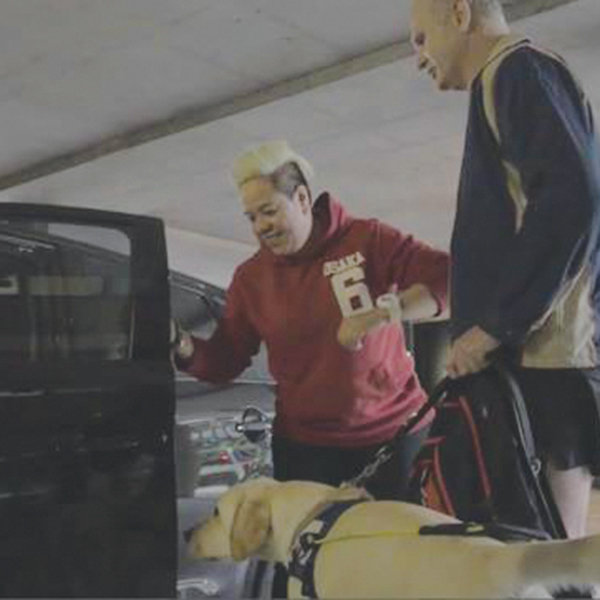Uber is looking at partnering with drivers of modified vehicles to improve services for people with disability. The car-sharing company carried out a trial using peer-to-peer (P2P) wheelchair accessible vehicles at the NDIS New World Conference in Brisbane in October. For the duration of the conference, Uber offered two UberWAV (wheelchair accessible vehicles) in the Uber app. Utilising the P2P model, it partnered with local drivers with modified vehicles to provide WAV trips for conference attendees. The pilot covered the Brisbane Exhibition and Conference Centres, surrounding hotels and Brisbane Airport and was available to riders accessing the UberASSIST view. WAV vehicles were offered at the same rate as a UberX trip. During the three day conference, 32 UberWAV trips were requested, with an average wait time of five minutes.
According to Uber manager of public policy and government relations, Jessika Loefstedt, Uber is now working on how it can offer the UberWAV vehicle option across Australia. “The P2P UberWAV model creates opportunities for families with modified vehicles to drive on the Uber platform around their carer schedule and family commitments and offers an additional form of income for their family,” she said.
All UberASSIST drivers can accommodate collapsible scooters, folding wheelchairs and walkers as well as service animals. UberASSIST drivers receive training on knowledge and safety requirements to best assist people with different accessibility needs including physical, intellectual and invisible disabilities. The training program was developed in conjunction with the Australian Network on Disability.
People with disability can access the Uber app that features VoiceOver iOS, the ability to contact with the driver via SMS or phone, track a driver’s ETA and cashless payments. There are now over 400 UberASSIST driver-partners operating in Sydney, Melbourne, Brisbane, Canberra, Perth and the Gold Coast. F2L spoke to one Sydney UberASSIST driver for her comments on the service. “When a passenger requests a ride through the UberASSIST, the system finds a car nearest to the pick-up address which comes up on the driver UberASSIST app, so I know I am going to collect someone with disability.” The driver said the service seems to operate without any issues but a lot of people seem to be unaware of the app. “I am not sure how Uber are promoting it but my guess is not enough people know about it and the convenience of being picked up anywhere at any time. If they did I think they would find it easier than catching buses or trains and a lot easier to get from A to B.” She said in her year as a driver people able bodied, or not, are happy with the service.
“People should not be put off going into the city as many buildings have facilities for disability parking now.” She added that the two hour training program involved role playing, how to treat and speak to the passenger and how to fold up a basic wheelchair. “It is important to be able to offer assistance particularly to a passenger who is vision impaired, but we must ask first if we can touch them to do this.”
The latest Roy Morgan research shows that younger Australians are more likely to jump on board the ride-hailing service than older Australians. Between July and December 2015, 980,000 people reported travelling by Uber with three-quarters of them aged between 18 and 34 years. Less than 10% were aged 50 and older. Uber adoption rates also vary between the states with Western Australians embracing the app/service the most and Victorians, even though the service remains illegal, are the second most likely to travel by Uber. “When it comes to downloading the app, Queenslanders follow WA residents, although the company is also illegal in the Sunshine State,” said Roy Morgan Research CEO, Michele Levine.

